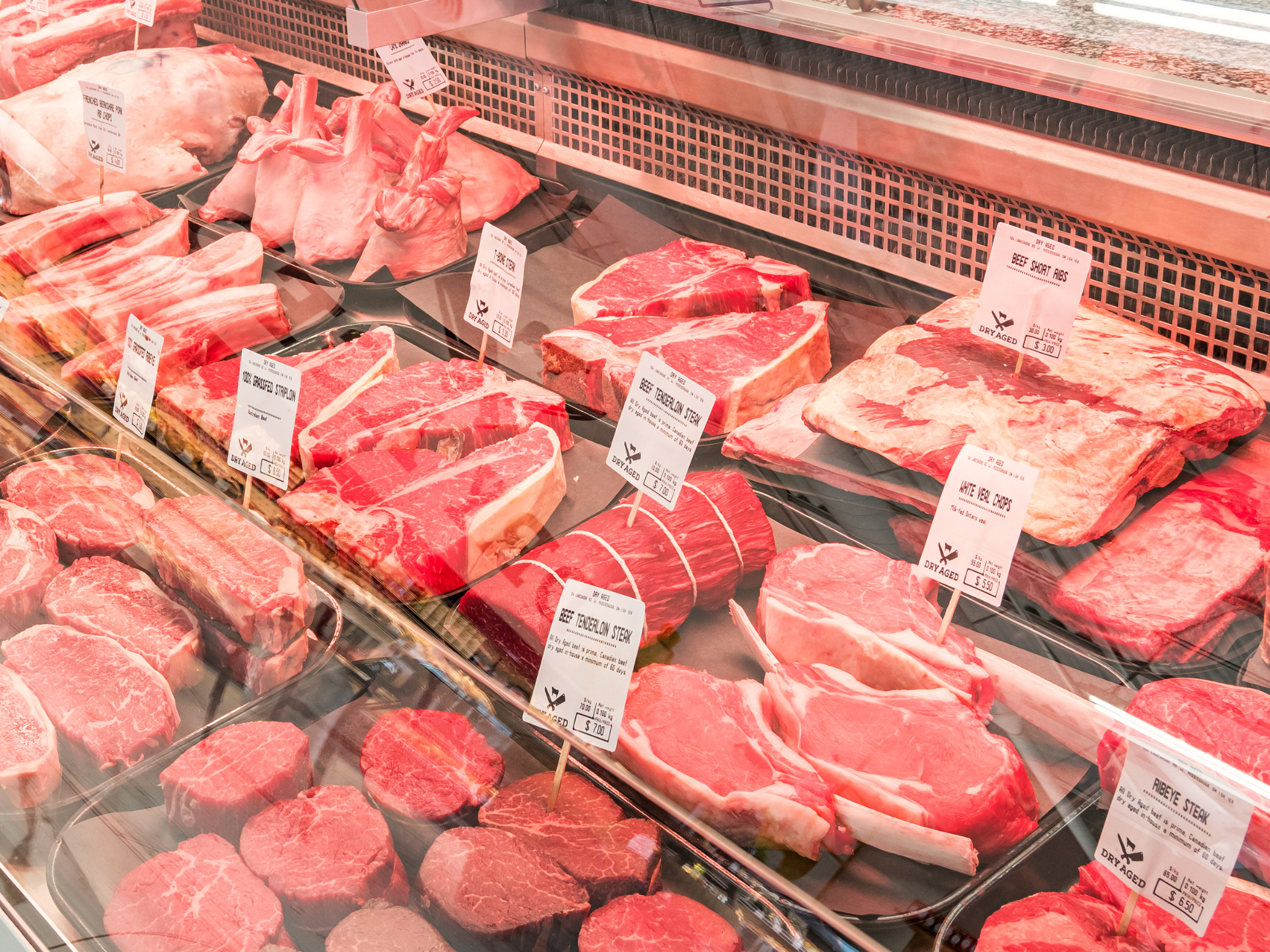
While beef consumption made a comeback in 2024, sustained demand and climate change have caused prices to reach record highs. Is this the new normal?
Beef has never been more expensive in the US. And going forward, high prices may be the norm for chefs and shoppers alike.
Just-published data from the US Bureau of Labor Statistics show that ground beef prices hit 5.80 per pound in cities in April, the highest since records began 40 years ago. The cost of uncooked beef steaks, meanwhile, reached an all-time high of $11.12 per lb last month.
This is unlikely to be an anomaly. American Beef cattle herd inventories have fallen to levels not seen in 70 years, as an ongoing drought decimates grazing pastures, while demand for beef soars amid America’s obsession with protein.
It may not be a carbon tax, but the price tag of this protein is a direct result of the climate crisis, which continues to threaten our food supply and livelihoods. Is this a new reality for beef?
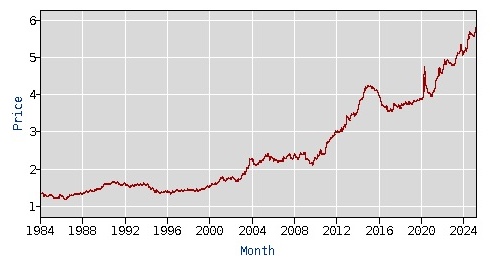
Why beef prices have risen sharply since Covid-19
The hike in beef prices has been particularly rapid in the last five years. Between 2016 and 2019, the per-pound cost of ground beef never touched $4; in April 2020, it breached this mark, a month after the Covid-19 caused the US to go into lockdown.
This was a combination of falling beef herds and the pandemic itself, which caused employee absences at meatpacking plants and led to a slowdown in slaughter rates and even temporary closures of certain factories.
While beef prices briefly dipped below the $4 mark at the end of the year and beginning of 2021, they sharply rose in March and have generally been on an upward trend ever since. Once the price went past $5 per pound in June 2023, it never receded below that threshold.
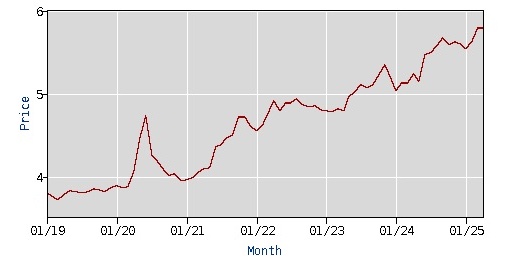
At the start of the year, a pound of ground beef cost $5.45, a 10% increase from 12 months prior. In the three months since, that rose by 4.6%, reaching the record high in April. It means that beef prices are up by 49% since the start of the pandemic-induced lockdowns in the US.
There are several factors driving beef’s price hikes. Cattle cycles tend to run for eight to 12 years, characterised by cattle production and producers’ response to changes in the market. The current cycle began in 2014 and hit a contraction phase in 2020 that has continued since, thanks in large part to drought.
In fact, cattle inventories have contracted at an increasing rate each year since the start of the pandemic. In October 2024, 62% of cattle were in areas suffering from drought, the most since December 2022.

The US Department of the Interior warns that drought poses a “serious environmental threat” across the US, and climate change exacerbates this by making droughts “more frequent, longer, and more severe”.
Beef, of course, plays a direct role in worsening climate change itself. It is the most polluting food on the planet, generating heat-trapping methane emissions while taking up large swathes of land. More than a third of US land is used for pasture – it means that the single largest user of land in the contiguous 48 states is grazing.

Without climate action, animal protein prices will keep rising
Despite this impact, beef consumption continues to grow in the US. Ground beef sales crossed $15B in 2024, a 9.6% year-on-year increase, just as overall meat sales hit an all-time high.
Apart from drought and demand, high grain prices, inflation, and rising interest rates have made cattle farming an expensive activity, while a temporary import ban on cattle from Mexico (due to concerns over parasites) hasn’t helped things.
That has left beef in a state of jeopardy. Inflation and supply chain disruptions continue to affect grain production, so cattle feed – and consequently, beef – will remain expensive until this situation eases. Moreover, beef herds will continue to get smaller unless producers expand their operations, an expensive premise given the high interest rates that mean they’re paying more for operating loans.
Meanwhile, domestic supply instability has led to an increase in beef imports in recent years, which will suffer from spiked prices thanks to President Donald Trump’s tariffs. There’s a cause-and-effect relationship here, with the US Department of Agriculture forecasting that tariffs will lower beef imports this year.
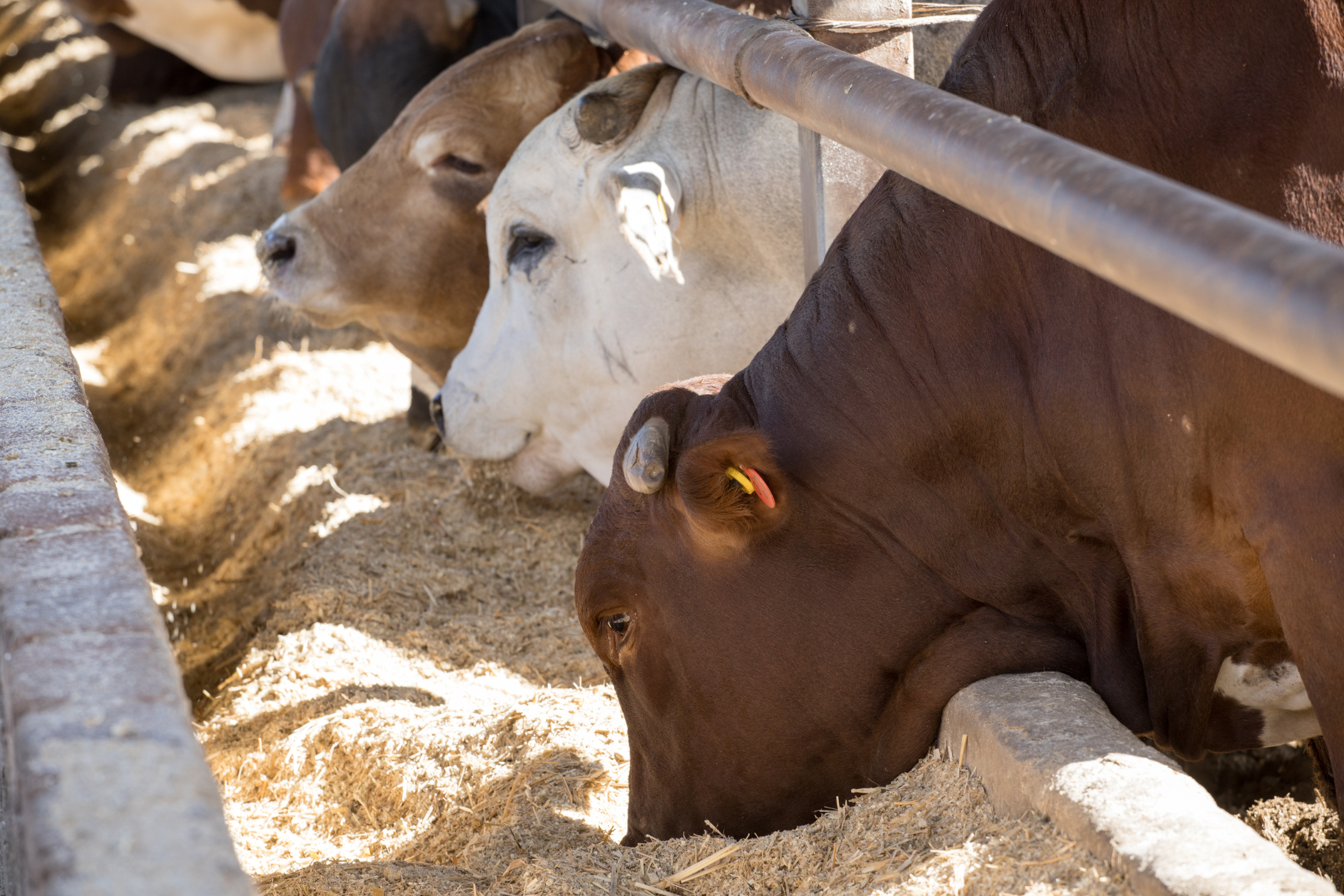
Meanwhile, climate change continues to worsen, and the current administration’s policies aren’t helping. Beef’s outsized climate footprint indirectly aggravates droughts in the US, further raising the price producers, consumers, and the planet have to pay.
It’s why the USDA predicts beef prices will increase by another 6.6% in 2025, with wholesale rates set to rise alongside by 5.7%. Further, beef isn’t the only animal protein suffering from unsustainable price hikes.
The egg crisis has, of course, been well-documented, with avian flu leading to the culling of over 160 million birds. Egg prices broke records consecutively in the first three months of 2025, and are set to rise by another 40% throughout the year.
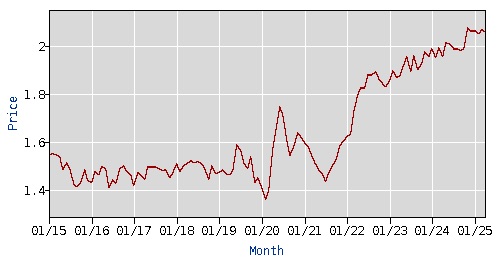
The price of fresh chicken also rose to levels never seen before this year, crossing $2.06 per pound in March. Milk, meanwhile, has remained above the $4 per gallon rate since August 2024, and was up by 5% this April compared to 12 months earlier.
Consumers and F&B operators beware: expensive beef just may be the new normal. In fact, expensive animal protein across the board may become the norm. As with beef, eggs, chicken and milk prices are expected to rise due to supply chain threats. Without mitigating the impact that producing these proteins has on global greenhouse gas emissions, land use, and water use, it’s hard to foresee any kind of price relief.
The post Is Expensive Beef the New Reality for US Consumers & Restaurants? appeared first on Green Queen.
This post was originally published on Green Queen.